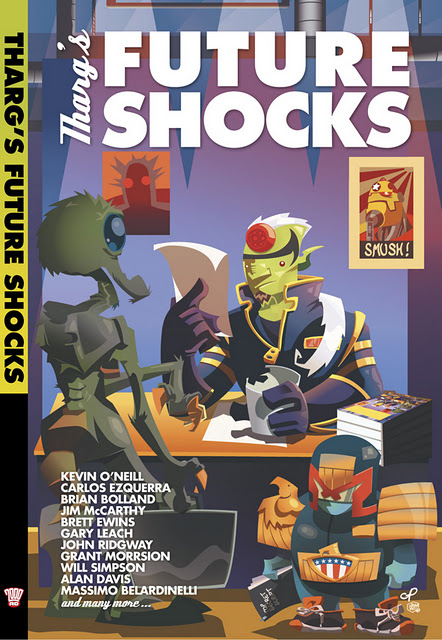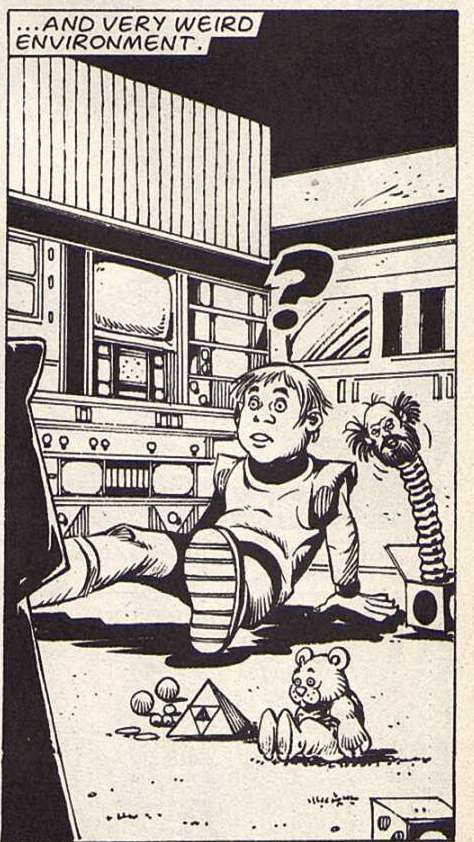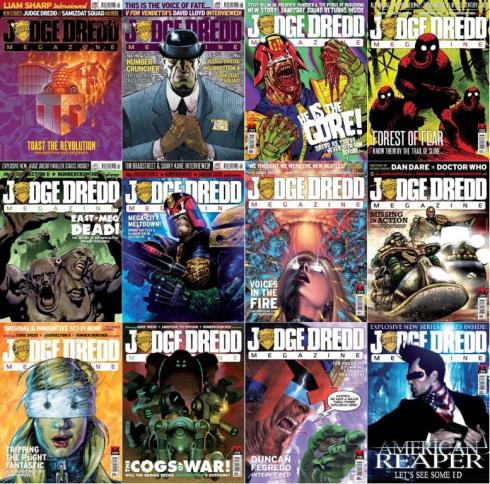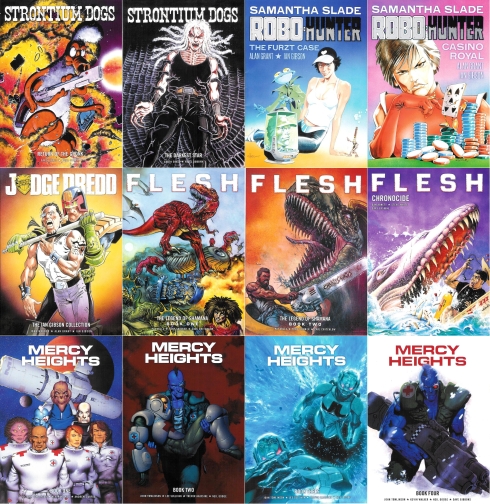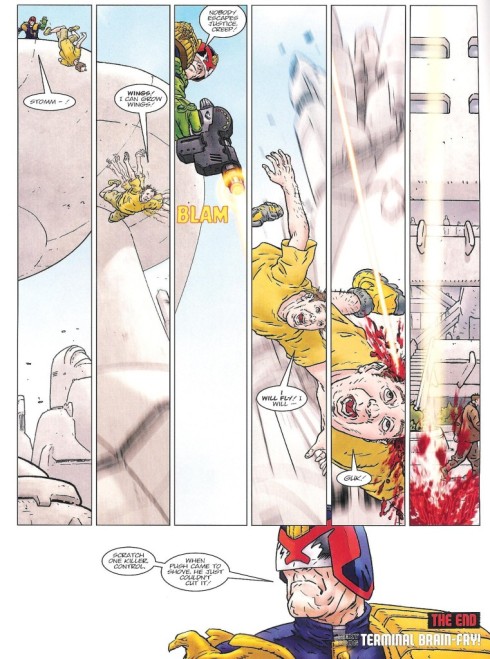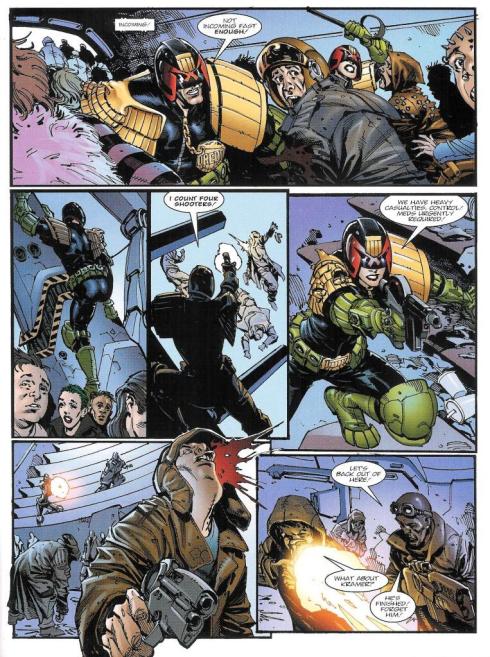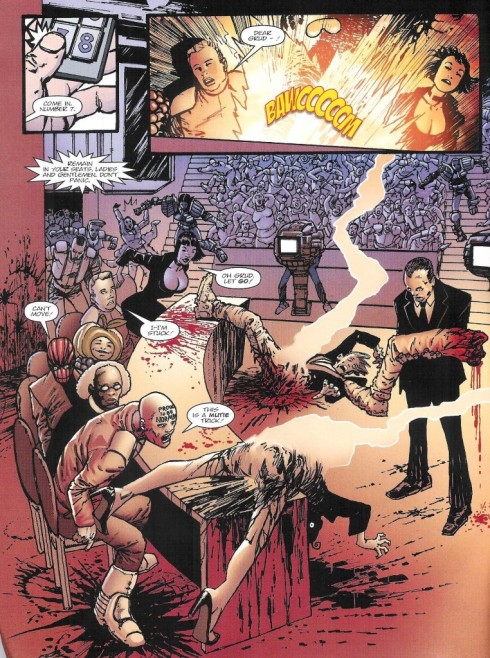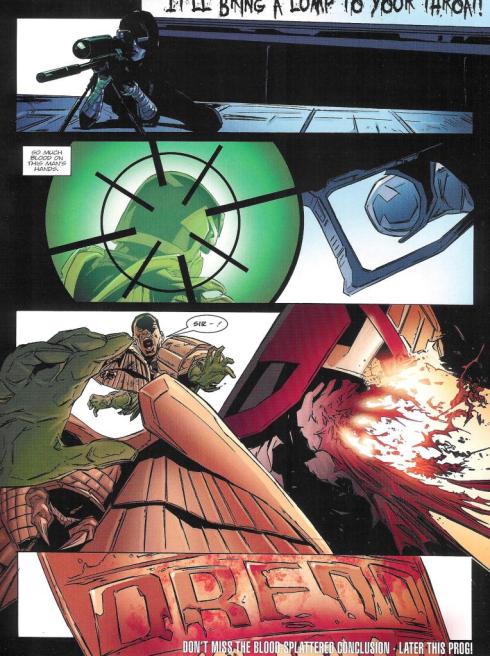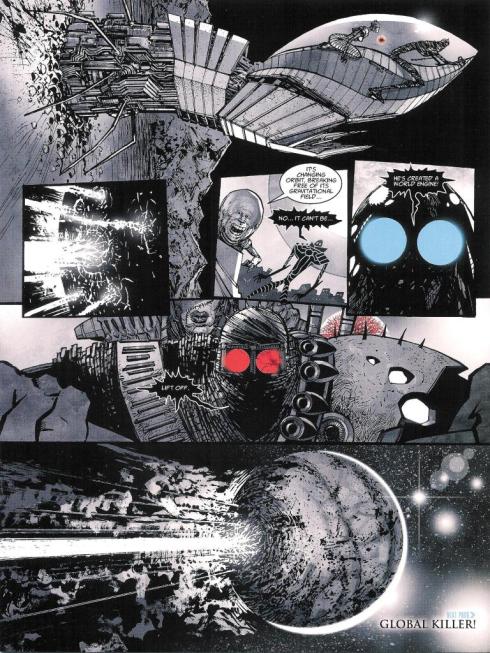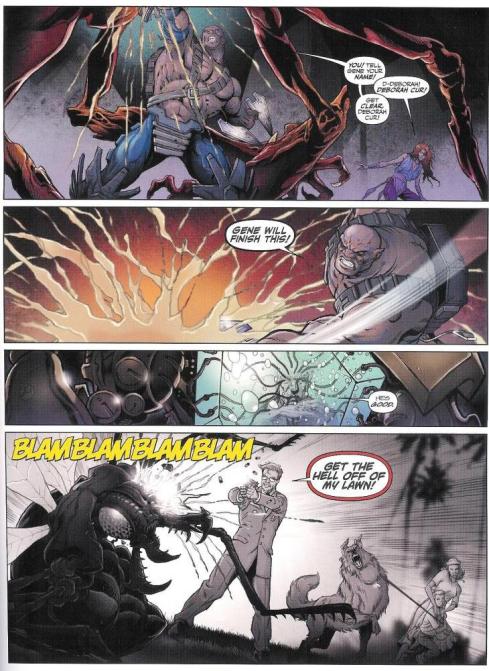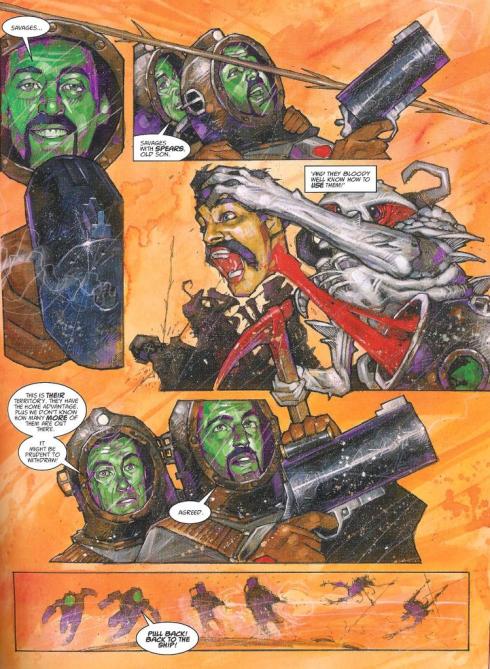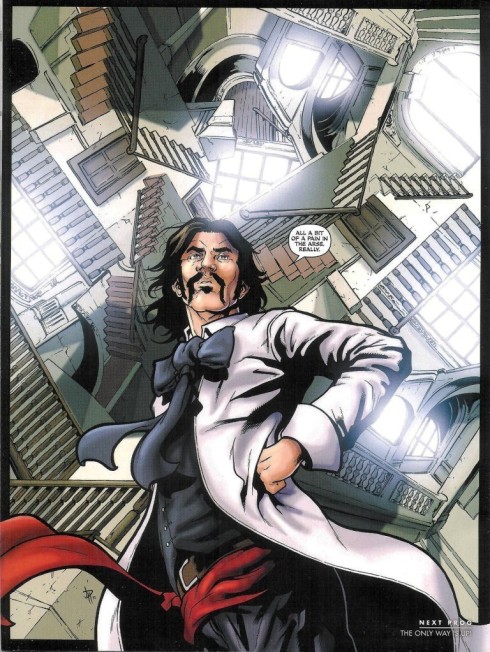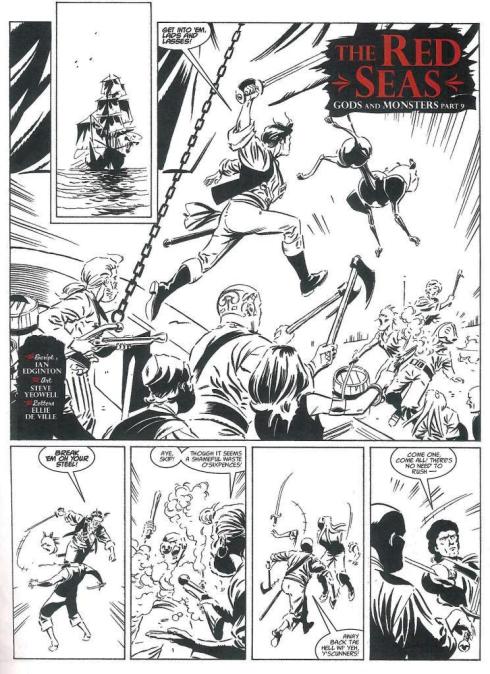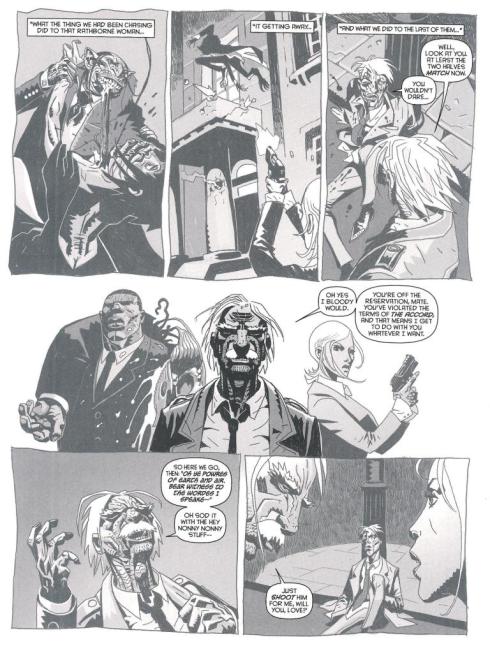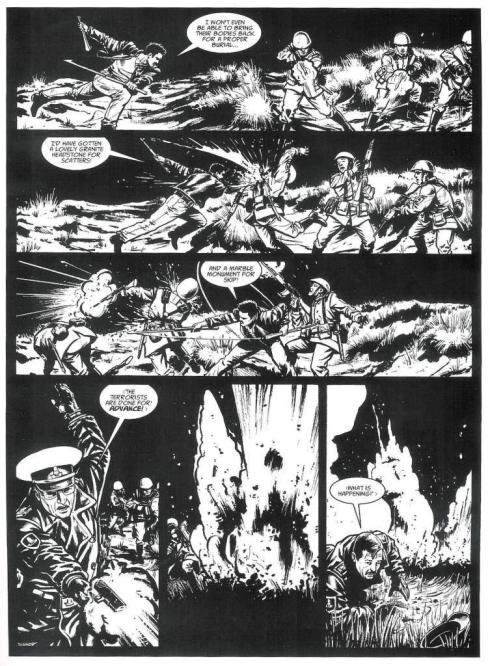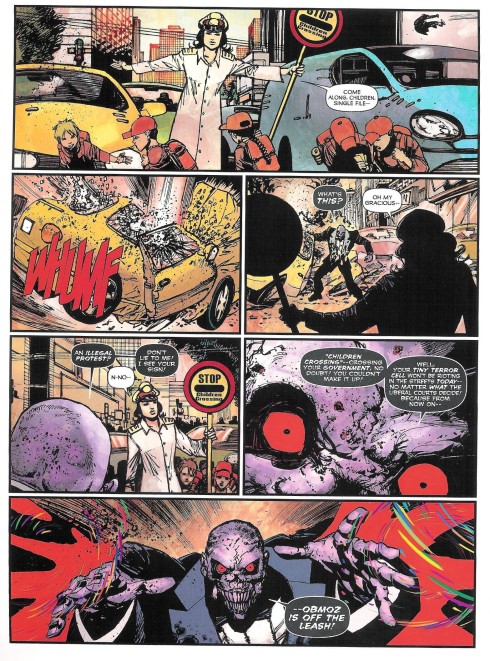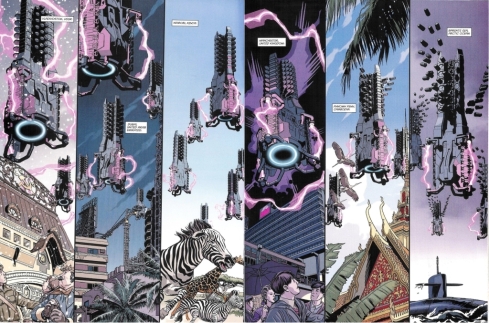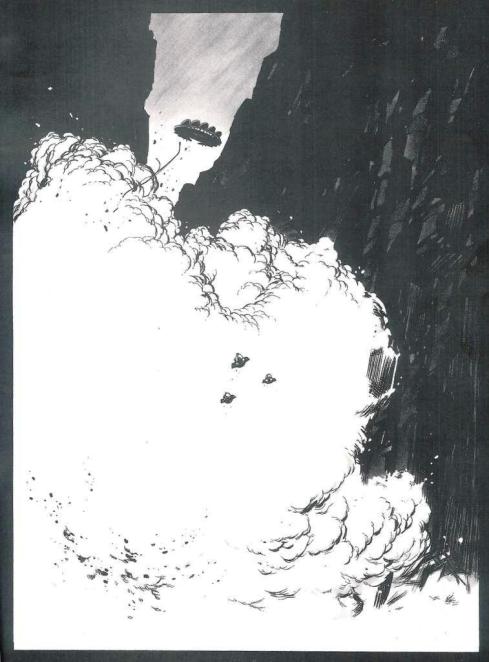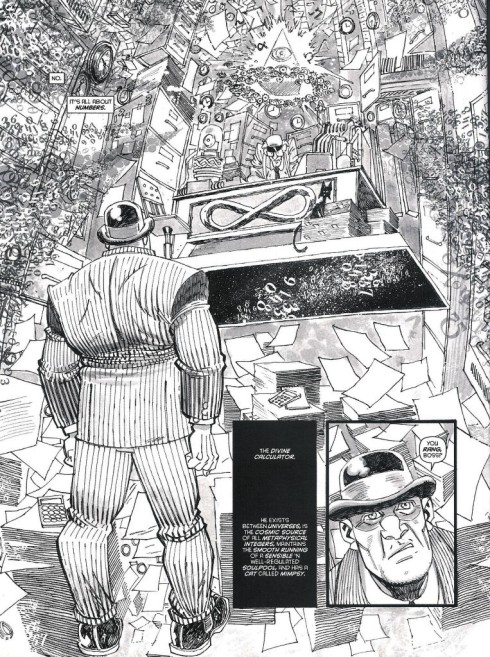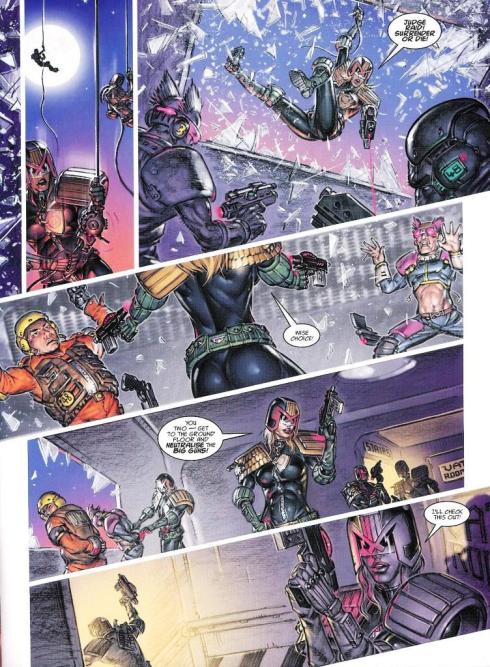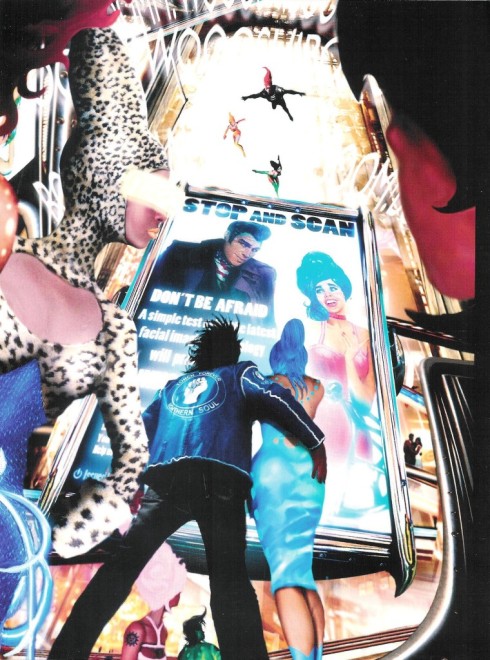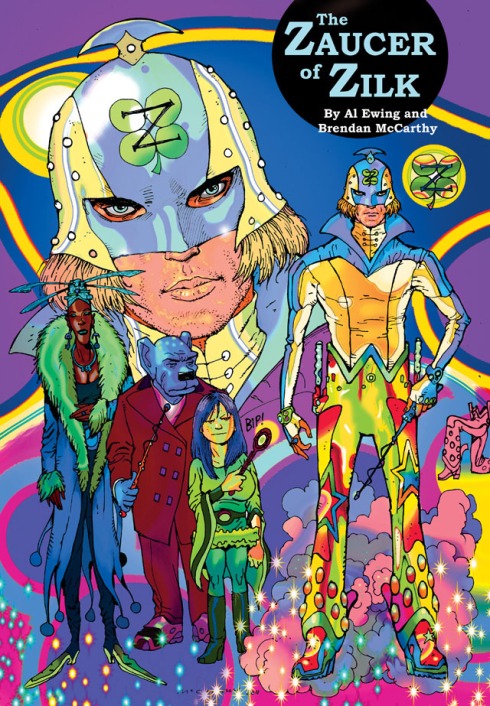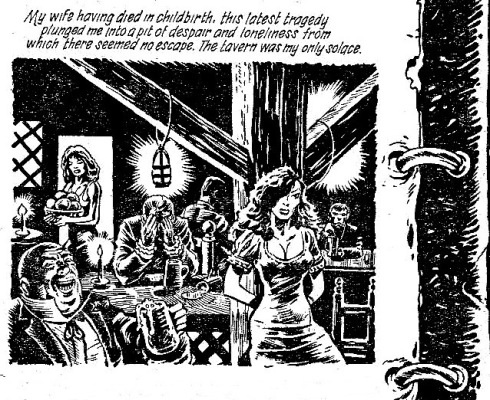2000AD is an institution, and all too often one that is overlooked in online comics reporting. Clearly Futureshockd has a bit of a love for it, but while working through all the one-off stories has so far only brought us up to the mid-100s Prog wise, the thing that might not be reflected so often is just how good the current run of 2000AD is. Every year more and more old readers return to it remarking how it has recaptured its bite and is in a second ‘golden age’. Now with the excuse of a lovely new Future Shocks book being exclusive with a subscription to the Prog & Meg, and with a mere handful of shopping days left till Xmas, this edition of Futureshockd is going to tell you why you should forget the bad Boot’s box set perfumes, the BBC tie-in book, and the ubiquitous M&S scarves and give the gift of Tharg for Xmas.
Thargs Future Shocks – Subscriber Exclusive
The first reason for any tempted comics fan to subscribe this winter is the current ‘subscriber exclusive’ gift – a unique ‘B-Format’ (19.5 x 12.5 cm) Future Shocked graphic novel which comes wrapped in a glorious wrap-around cover from the talents of Grant Perkins & Jamie Roberts. A hefty 128 pages of Future Shocks and contains a great many formerly un-reprinted works by the likes of Brian Bolland, Massimo Belardinelli and Kevin O’Neil.
Happily the book contains a good many of the Future Shocks already discussed on the blog –
- FS 4 – Wings (Kev O’Neill),
- FS 5 – Just Like Home (Peter Harris, Ron Turner)
- FS 7 – A Promised Land (unknown / Horacio Lalia)
- FS 9 – Fangs (Chris Lowder, Carlos Ezquerra)
- FS 11 – Play Pool (Kelvin Gosnell, Kevin O’Neill)
- FS 13 – Space Prospector (Martin Lock, Trevor Goring)
- FS 14 – The Runts (Steve Moore, Pat Wright),
- FS 15 – Time Past (Martin Lock, Jose Luis Ferrer),
- FS 17 – Time Was (Martin Lock, Ramon Sola)
- FS 18 – Enemy Agent (Nick Tufnell, John Cooper)
- FS 19 – Substitute (Robert Flynn, Giorgi)
- FS 21 – The Guardian (Mike Cruden, John Cooper),
- FS 23 – Solo Flip (Chris Lowder, Brian Bolland),
- FS 25 – Stasis (Charles Swift, Brendan McCarthy, Brett Ewins),
- FS 26 – Space Bug (V Wernham, Jose Luis Ferrer),
- FS 27 – Monkey (Alan Hebden, Mugallanes),
- FS 29 – Tin Can (Mike Cruden, Jose Luis Ferrer),
- FS 30 – Timeless Secret (SJ Grimes, Ramon Sola),
- FS 33 – Dead Hit (Robert Flynn, Pierre Frisano),
- FS 34 – The Illusion Man (Martin Lock, Pierre Frisano),
- FS 36 – Nothing On Earth (Chris Lowder, Pierre Frisano),
- FS 37 – Breaking Out (Jan Garczynski, Carlos Pino),
- FS 41 – The Fourth Wall (Mike Cruden, John Cooper),
- FS 43 – Date With Destiny (Mike Curden, Massimo Belardinelli),
- FS 47 – Cold Kill (Mike Cruden, Garry Leach),
- FS 50 – Dear Mum (John Richardson),
- FS 55 – Colin’s Dream (Chris Stevens, Massimo Belardinelli),
- FS 56 – Hand of Friendship (John Richardson)
A hearty 28 of the 57 Future Shocks that constituted the first swath of Future Shocks are included, with Tharg doing his best to plunder the gems of the early strips. It’s hard to argue with the choice of strips for inclusion – 7 of the 9 ‘best’ strips selected in the periodic Futureshockd summaries are chosen and the exclusion of one of the remaining 2 (FS 2 – First Contact) is likely down to it being a colour strip. It is however a great shame that FS 48 – Brain Drain (Steve Moore, Ron Tiner) isn’t included as it stands as one of the best early stories and much more indicative of the black humour of 2000AD than other stories. The other notable absence is ‘Many Hands‘ (FS 32) which features some beautiful Jose Casanovas art that certainly deserved a reprint. Also absent is the famed Alec Trench tale, but perhaps Tharg has other plans for the work of his best-worst ever writer. Aside from those three Future Shocks the selection well-considered with some of the best stories and much of the best art. Both early Massimo Belardinelli strips appear as well as great art from Pierre Frisano, Garry Leech, Trevor Goring and Carlos Ezquerra. It is particularly nice to see both the stories of Mike Cruden and the art of Pierre Frisano well represented as these are two names who have largely been forgotten about in 2000AD lore but whose contributions to Future Shocks early days was particularly strong. The same is also true of Martin Lock and Jose Luis Ferrer who are likewise well represented in the selection.
The remaining stories in the book come from the second wave of Future Shocks and contains work by the likes of Ian Kennedy, Jose Casanovas, Garry Leech, Mike Collins, Mark Farmer, John Ridgway, Grant Morrison, Alan Davis and Will Simpson. The collection concludes with a fantastic six-page strip by Massimo Belardinelli (Resentment, Prog 537) which is chock full of future cityscapes, weird aliens and, yes, dead bodies. In the hands of the departed Italian master that combination is as strong a conclusion as any omnibus could hope for. The three Belardinelli entries alone make this book a must-have for a 2000AD reader.
The stories have been reproduced beautifully, despite the smaller size, and the reproduction team deserve great credit for the crisp look of the lovely B&W artwork. The only small shame is that some of the tales which work best by hiding the reveal behind a page-turn have their ‘shock’ image printed on a facing page, robbing the impact of the reveal. However that doesn’t detract from the overall fun of the collection. It’s a lovely book, a real incentive to take out a subscription, and a nice companion piece to anyone who has been enjoying this blog. And yes, it does contain that wonderfully weird drawing of Neil Armstrong (FS 19).
However the real reason for getting a subscription to 2000AD is the strength of the modern comic. Probably the easiest way to show just why any comic reader should be subscribing is to show you just what you missed in 2011. In pure numbers thats 50 progs:
A year of Judge Dredd Megazines
A year of Megazine Reprint Comics
All of which weighs in at a whopping 1862 pages of new comics and a generous 766 pages of reprints. Which, for the statistically minded, works out at 8.5p per new page or 6p a page if you throw in the lovely shiny reprints. Plus the famed ‘Star Scans’, old cover art reprinted, interviews with creators and the odd free-gift from the House of Tharg.
But cost per page is an odd way to judge a comic, tempting new readers to 2000AD very much stands or falls on the stories and art, which in 2011, as every year, consisted of a whole heap of Judge Dredd.
2011 in Dredd
In 2011 Dredd included the massive new on-going epic ‘The Day of Chaos‘ (Wagner, MacNeil, Willsher, Flint, Gallagher) which kicked off with a prologue that saw PJ Maybe break out of captivity (The Further Dasterdly Deeds of PJ Maybe- Prog 1740-43) before kicking off proper with ‘Nadia‘ (Prog 1744 – onwards) in July. Returning old droids saw the psychotropic madness of Brendan McCarthy in The Walking Dredd (Rob Williams, Brendan McCarthy(Meg 311)), the return of Bryan Talbot in Caterpillars (Mike Carroll, Bryan Talbot & Alwyn Talbot (Prog 1730) and Mike Collins team up with Dredd stalwart Cliff Robinson (In the Absence of the Sacred (Meg 315)). King of the returnees this year was undoubtably Liam Sharp with two astounding graphical turns in Blaze of Glory (Al Ewing, Liam Sharp (Meg 305)) and Dredd Set (John Tomlinson, Liam Sharp (Meg 309)). Prior to Wagner’s embarking on The Day of Chaos his only other strip was the atmospheric 30 page ‘Hot Night in 95‘ (Meg 307, 308 & 310) which saw Dredd and the returning Hershey team up to crack some skulls. Dredd’s other elder-statesman writer, Alan Grant, chipped in with several short tales including the wonderful dark ‘In the Absence of the Sacred‘ (Meg 315) and the sweet crazy-citizen tale of ‘The Pusher’ (Prog 1736). Relative newcomer Michael Carroll scripted a flawless one-off in Downtime (Prog 1752) and returning champion Gordon Rennie gave laughs in Persistent Vegetative State (Prog 1726-27) and a procedural meets PSI with vintage Dredd dialogue in Scream (Prog 1737-39). Taking the ‘best non-Wagner’ crown for the year was undoubtedly the 48 page Parker-esque noir classic from Al Ewing (Served Cold – Al Ewing, John Higgins, Prog 1718-25) which showed the young tyro can do gripping procedural drama every bit as well as the sick humour he is more associated with.
Given you can fill several posts with what happened in Dredd in 2011 Futureshockd will limit itself to a top 10 of Dredd moments (be they art or script) that made up the best of Dredd 2011
10) Scream – Gordon Rennie & Lee Carter – Prog 1737-39: Dredd & PSI Judge Hamida investigate an illegal Brainbloom operation. Immersive art, classic Dredd qips and antagonism towards indulgences of PSI Judges from Dredd.
9) The Family Man – Al Ewing & Leigh Gallagher – Meg 312-13: Al Ewing installs his first major long-term opponent for Judge Dredd in the sinister whiter-than-white black-op’s fronting administration Judge Bachmann after a meaty two-part ‘someones killing mutants’ tale set in the under resourced townships.
8 ) The Pusher – Alan Grant & Peter Doherty – Prog 1736 – Classic 6 page ‘citizens are crazy then Dredd shoots them’ from veteran Alan Grant as a perp pushes citizens to their death to measure their reactions. Doherty’s understated european realism is the perfect foil
7) The Return of Liam Sharp – Blaze of Glory (Meg 305, Al Ewing & Liam Sharp) & Dredd Set (Meg 309, John Tomlinson & Liam Sharp) saw the return to Dredd, after a near 20 year hiatus, of the co-creator of PJ Maybe. After Brendan McCarthy’s return in 2010 the trend of returning droids shows how much love there is for old stoney face amongst the very finest of industry talents. Sharp’s art encompassed a mass of different styles and techniques and excitement bleed off each panel.
6) Persistent Vegetative State – Gordon Rennie & Cliff Robinson – Prog 1726-27: Corporate Politics, The Wally Squad, Dredd itching as he has to act as security for an unworthy subject and the return of the MC-1 fad ‘couch potatoes’ make for a fun two-parter beautifully drawn by Cliff Robinson
5) Hot Night in 95 – John Wagner & Staz Johnson – Meg 307, 308 & 310: John Wagner slides former Chief-Judge Hershey back into MC-1 with a low-key night on the streets along side Dredd, with ruminations on the events in the past and unsaid lessons on their ages. Majestic.
4) Served Cold – Al Ewing & John Higgins – Prog 1718-1725: Al Ewing goes for the noir police procedural in this tale of an escaped perp seeking revenge on those that double-crossed him as the Judges close in on his re-capture. Riffing on Parker and echoing the best of John Wagner this tale confirms Ewing as not just a great fun Dredd writer but a heavy hitter likely able to carry the strip for years to come.
3) Brendan McCarthy is (still) back – The Walking Dredd, Rob Williams & Brendan McCarthy – Meg 311: Following on from his acclaimed return to 2000AD last year Brendan McCarthy indulged the Meg with more unique Dredd art in a fun tale that exists only to show off his art and make the pun in the title. The even better news is that McCarthy returns to the Prog in 2012 with his own series.
2) It’s Maybe Time – The Day of Chaos – Elusive Pt 5 – John Wagner & Henry Flint Prog 1757: Three months into the Mega-epic and the absconded PJ Maybe makes his move against the Presidential candidates seeking to replace him. Henry Flint brings a touch of the Zombo and Shakara gore-fest madness to the Presidential-debates-gone-wrong. It’s very likely he enjoyed drawing it every inch as much as you enjoyed reading it.
1) The Day of Chaos – Nadie Pt 7 – John Wagner, Ben Willsher – Prog 1749: There could be no other moment from 2011 at the top of the heap. The always excellent ECBT 2000AD podcast has a reading of the script, by artist Willsher, of the day they blew Old Stoney Face’s head off. John Wagner told Willsher to make sure Dredd’s head is a thing of the past and boy did he excel at the task.
(continued in post below)

